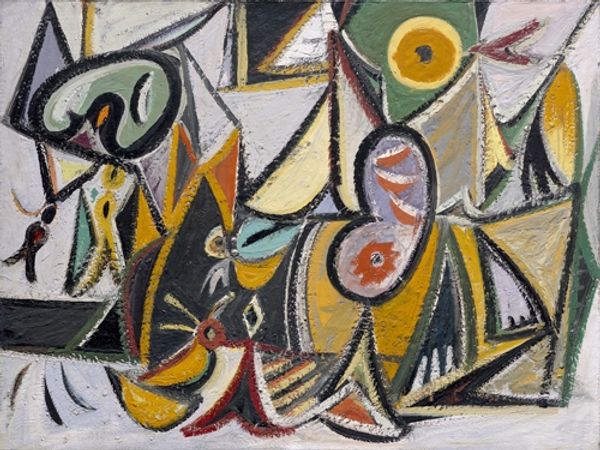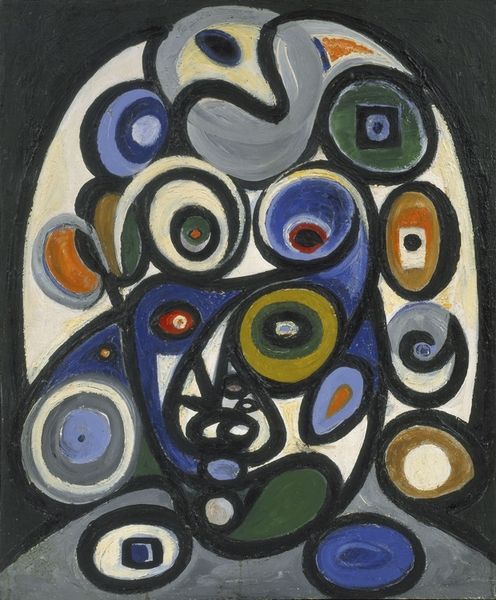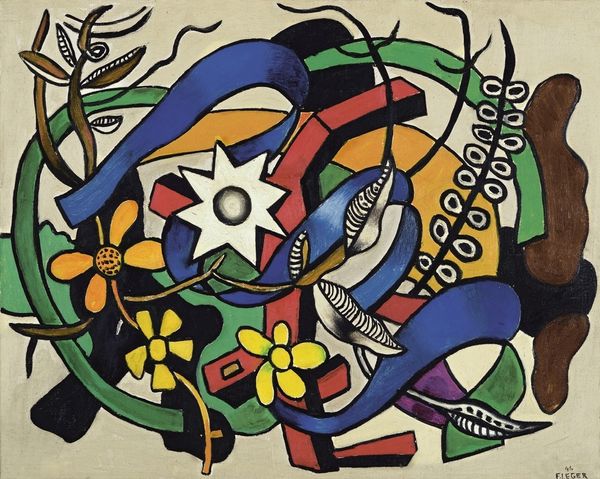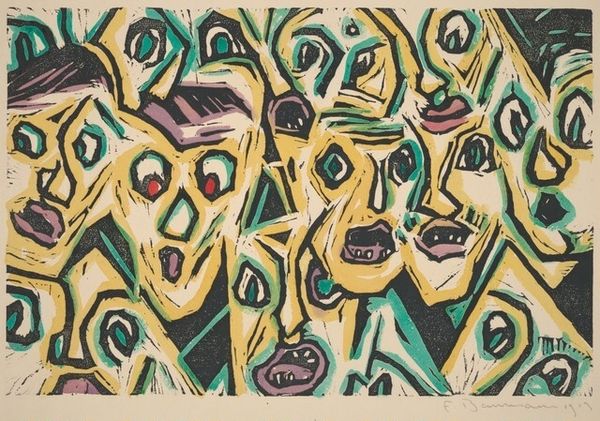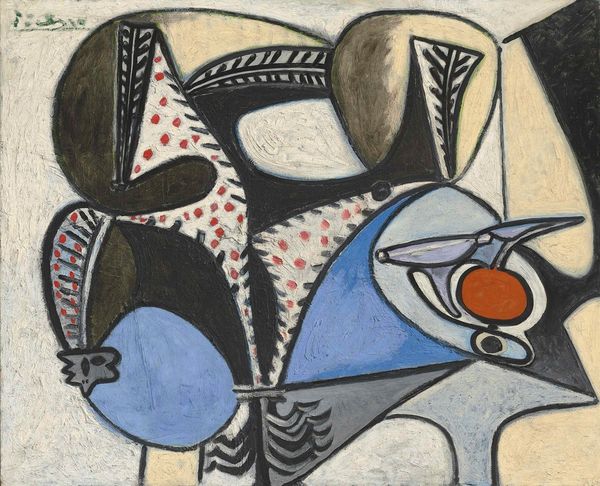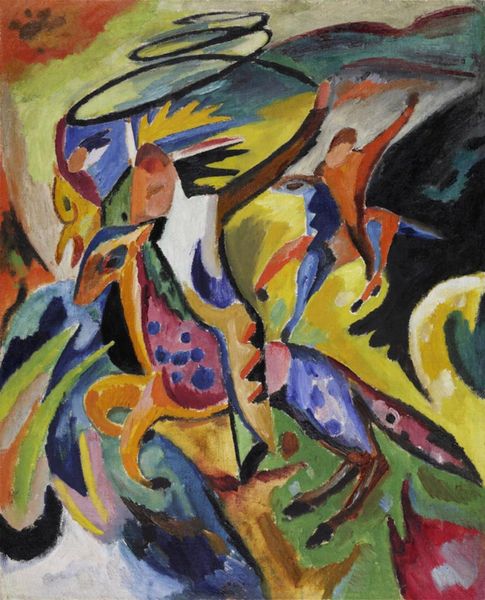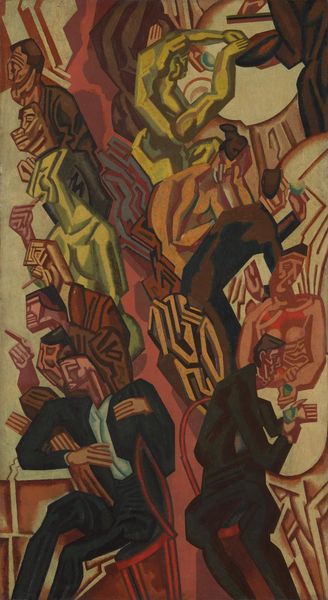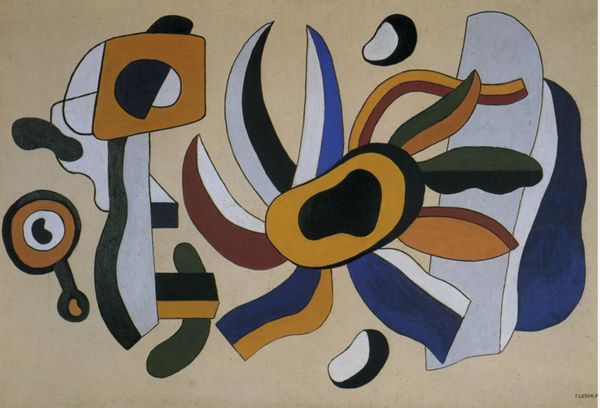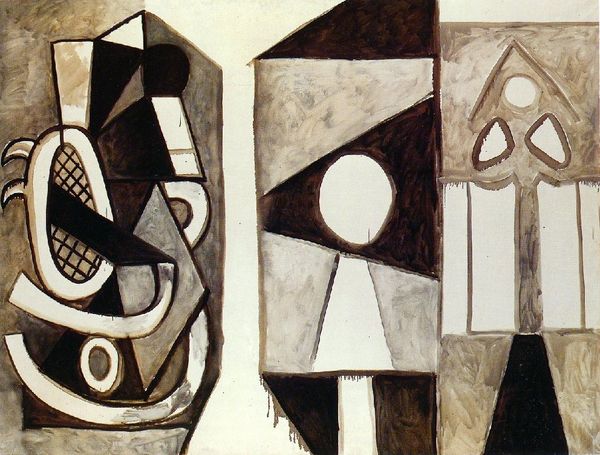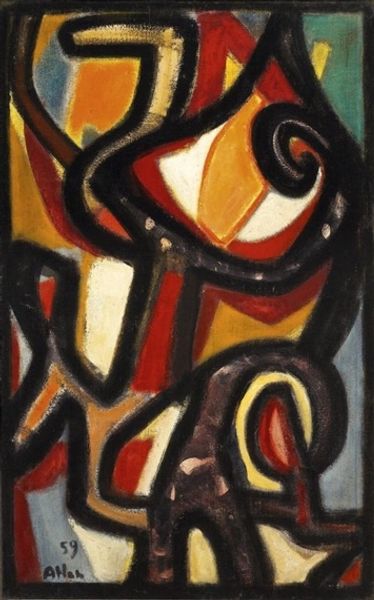
Copyright: Richard Pousette-Dart,Fair Use
Editor: Richard Pousette-Dart's "River Metamorphosis," painted in 1939 with oil paint, presents a captivating puzzle of shapes. It's organic, and has something both calming and unsettling about it. What do you see in this piece, especially considering its historical context? Curator: I see a direct response to the rising global tensions of 1939. While ostensibly abstract, biomorphic forms like these allowed artists to engage with ideas of transformation and the underlying structures of life while circumventing direct political commentary. The title itself, "River Metamorphosis," speaks to a world in flux. Pousette-Dart presents change not as a linear process but a series of overlapping, interconnected forms. How do you think museums at the time influenced the display and understanding of works like this? Editor: I imagine the MoMA, being fairly new then, would have championed such abstraction as a forward-thinking, universal language, apart from specific political narratives, and possibly in stark contrast to Social Realism? Curator: Exactly. Institutions like MoMA positioned abstract art as a symbol of freedom and individualism, a counterpoint to totalitarian regimes which favored representational art with clear propaganda value. The display of "River Metamorphosis" would emphasize its formal qualities, its exploration of organic shapes, and downplay any explicit social or political undertones, framing it instead within a narrative of artistic progress and aesthetic innovation. What do you think about this museum's involvement in presenting artwork during the historical events of the time? Editor: It's a complex dynamic. Presenting abstraction as apolitical seems, in retrospect, almost a political act in itself, deflecting from harsh realities. Yet it also offered a space for contemplation and perhaps even quiet resistance. Curator: Precisely. It makes you consider how seemingly neutral choices – from exhibition design to curatorial interpretation – can subtly shape the reception and impact of an artwork within a particular historical moment. I’m glad we looked deeper today. Editor: Me too. I'll definitely consider those factors when I analyze other pieces now.
Comments
No comments
Be the first to comment and join the conversation on the ultimate creative platform.

